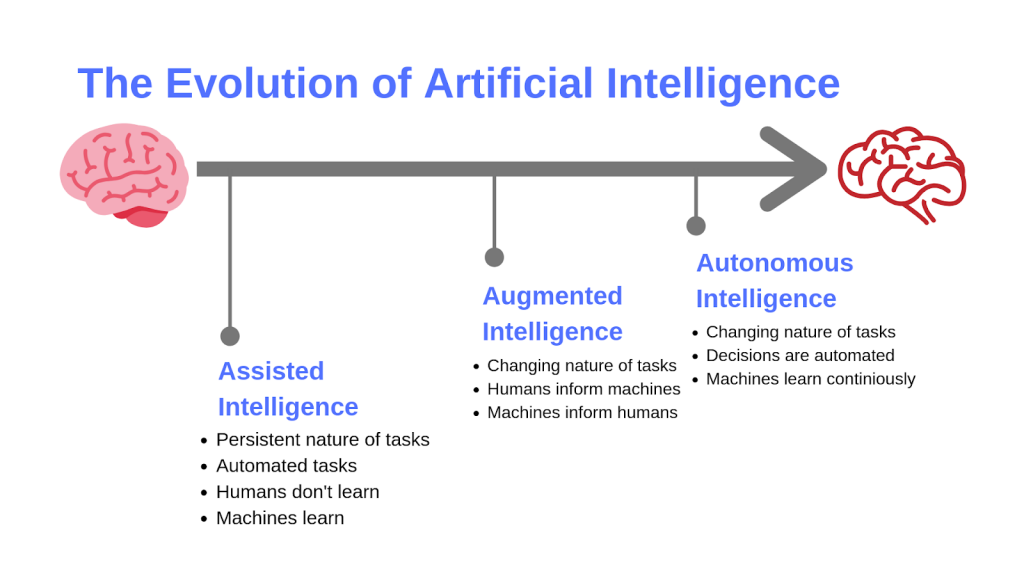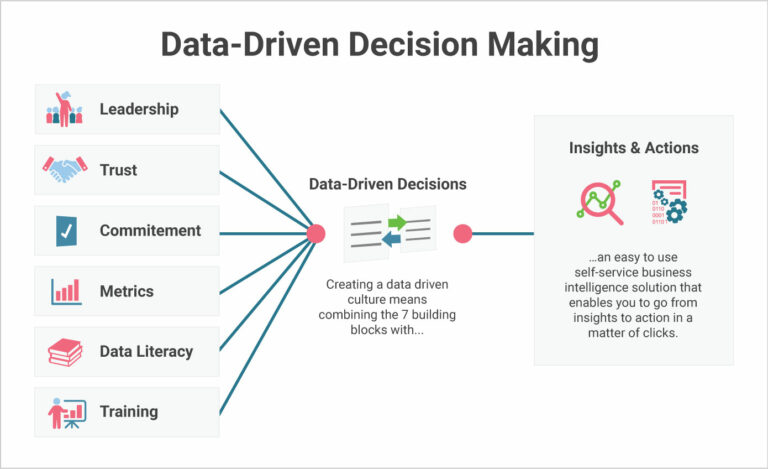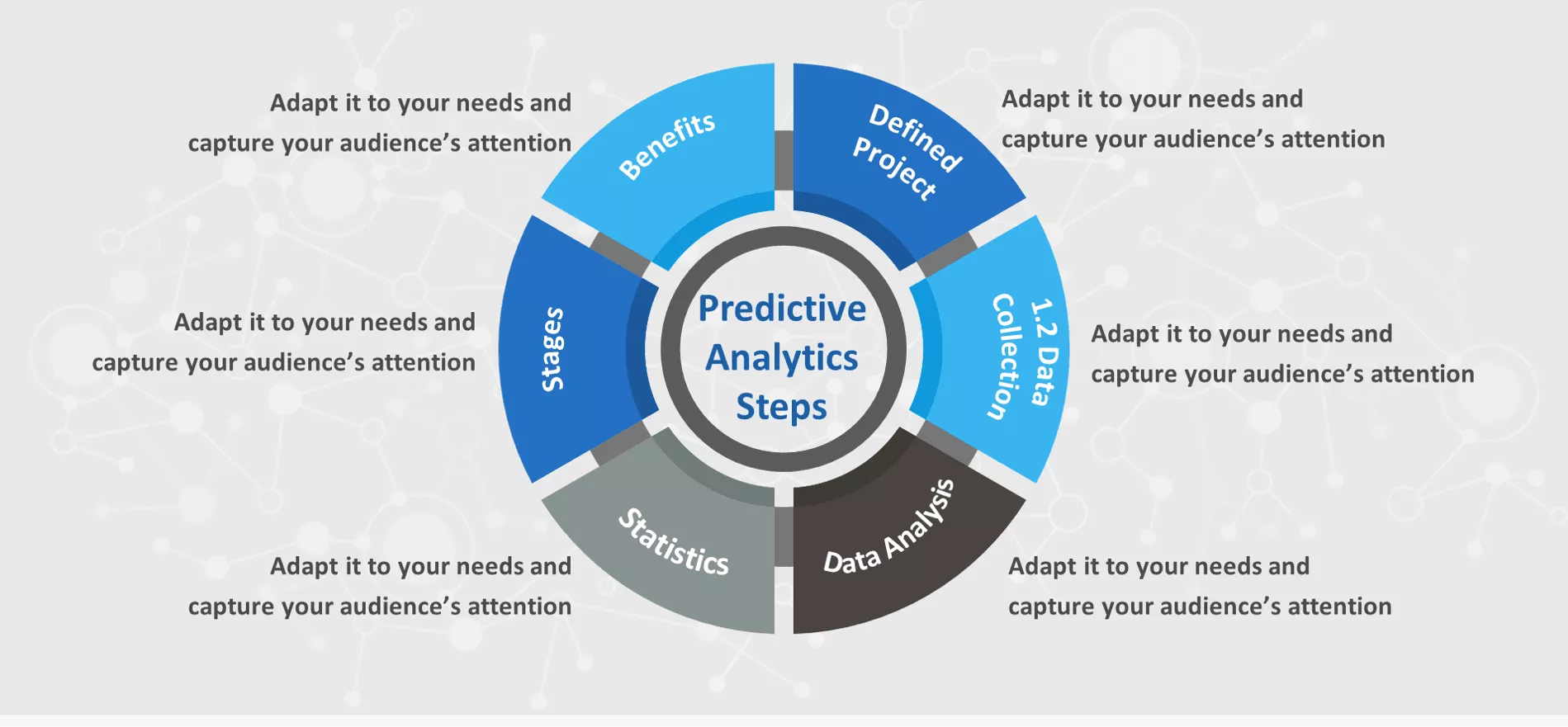How artificial intelligence analytics is easing data-driven decision making

Artificial intelligence analytics are a "must have" for businesses today when it comes to digitization. This is true for any data-driven business that it must manage its operations using data as the key factor.
Let’s understand with an example, A data engineer is assigned a task to derive information from the marketing campaigns organized by the company and based on the data, he will have to suggest to the managers on which campaigns they should continue to enhance engagement or which campaign idea they will have to drop. But he is equipped with numerous data and manual analysis will take enough time and he is running low in his deadline.
To complete the task in time, he has taken help of artificial intelligence analytics and has made data-driven decision making faster. Here’s how you can also benefit from artificial intelligence analytics and make data-driven decision making speedy.
Using traditional analytics is not a good approach because Traditional analytics have had their uses, but they are insufficient in the business world of today due to a number of flaws. They are difficult to expand to meet growing demand, and they are unable to offer the real-time insights required to compete with inventive rivals in quick-moving markets.
By providing a degree of speed, size, and granularity that is not humanly achievable, artificial intelligence (AI) and machine learning (ML) are revolutionizing the field of analytics.
Let’s get deep into what artificial intelligence analytics is and how it is efficient for data-driven decision making.
Artificial intelligence: what is it?
Artificial intelligence, sometimes known as AI, is the capacity of a machine to imitate human cognitive and learning processes. AI attempts to hasten problem-solving and decision-making without making mistakes. They refer to those machines as intelligent bots in technological terms.
The field of artificial intelligence has grown over time thanks to technological breakthroughs. There are currently three recognized levels of AI that can be encountered.

Assisted intelligence
It is primarily used to automate straightforward operations and processes and is frequently regarded as a fundamental form of artificial intelligence. This is accomplished by combining the strengths of Big Data, the cloud, and data science, and is unsuitable for decision-making. Although it necessitates continual interaction from humans, it frees up humans to carry out more involved tasks with obvious results. By alerting humans to potential solutions and giving them the power to make final decisions, the major objective is to enhance the procedures that are currently in place.
Transportation, healthcare, and personal assistant use are some of its primary applications; examples include GPS navigation systems for drivers.
Augmented intelligence
It enhances human intelligence and makes it possible for individuals and groups to accomplish goals more quickly and effectively than they could on their own. It is based on neural networks, computer vision and image identification. Instead of simulating independent intellect, the primary function is to assist human decisions. It follows a five-function sequence that enables it to learn under the influence of humans.
The steps in this process are as follows:
- Understanding the system data intake
- Interpreting new datasets based on historical data
- Using reasoning to produce output from the new data
- Using Comparative analysis to learn from human comments and modifying itself as necessary
Some of its primary applications include in the financial, healthcare, public safety and cyber security and many other fields. For example, banks perform regulatory and risk analysis duties.
Automation intelligence
Automation intelligence creates end-to-end business processes that think, learn, and adapt on their own by combining robotic process automation (RPA) with cutting-edge technologies like artificial intelligence (AI), data analysis, optical character recognition (OCR), intelligent character recognition (ICR), and process mining. Hyper-automation and intelligent process automation (IPA) are other terms for intelligent automation. Using machine learning to assess historical and current workload and compute data is an instance of intelligent automation.
Now, when it comes to analysis, AI has its own creation in the form of artificial intelligence analytics.
What is artificial intelligence analytics?
Artificial intelligence analytics is basically a better and smarter version for gaining insights from data. Artificial intelligence analytics uses machine learning methods to unearth new patterns, correlations, and insights in data. This gives users an extra advantage by analyzing unstructured data. Artificial intelligence analytics frequently enhance their productivity, data analysis scope, and monitoring granularity.
Important artificial intelligence analytics elements
While not all artificial intelligence analytics solutions will have the same appearance, the most potent ones will combine correlation analysis and real-time analytics.
Real-time data analysis
Real-time data analysis is essential for providing insights at the speed of business. Because the analysis is done continuously rather than on a daily, weekly, or monthly basis as is the case with traditional analytics, it takes less time to resolve incidents and get insight into opportunities.
Analysis
Correlation analysis reveals important connections between measures or sets of metrics that at first glance could seem unrelated. If measurements have a high degree of connection, you can combine them to avoid performing individual analyses. By removing pointless incidents and combining similar anomalies into a single warning, correlation analysis also lowers false positive results and alert storms.
What is data driven-decision-making?
Using data to inform and validate judgments is a process known as data-driven decision-making (DDDM). Interactive dashboards are one example of a modern analytics tool that helps workers overcome prejudices and make the most effective management decisions that are in line with corporate strategy.
Fundamentally, using verified, evaluated data to make decisions rather than winging it implies working toward important business goals.
However, your data must be precise and pertinent to your objectives in order to be truly valuable. It used to be a time-consuming process to gather, extract, prepare, and analyze insights for better data-driven decision making in business. This naturally caused the process to take longer overall.
However, today's customers may analyze their data and get insights from it even without extensive technical experience thanks to the development and democratization of business intelligence tools. As a result, creating reports, trends, visualizations, and insights that assist in the data decision-making process requires less IT support.
These innovations led to the creation of data science—a field where statistical knowledge and hacking abilities converge—or at least to a significant degree of its evolution. This relatively new profession entails sorting through vast amounts of unstructured data in order to make wise, data-driven business decisions.
Data driven decision making are identified in two ways-quantitative and qualitative
The focus of qualitative analysis is on non-numerical or non-metric data, such as anecdotes, movies, and interviews. Analyzing qualitative data relies more on observation than measurement. Coding the data is essential in this case to make sure that the pieces are put together logically and methodically.
Statistics and numbers are the main topics of quantitative data analysis. A key factor in this is played by the median, variance, and other descriptive statistics. Instead of being observed, this kind of study is measured. To improve the quality of data-driven business choices, both quantitative and qualitative data should be analyzed.
The importance of data-driven decision making

Businesses may produce real-time insights and forecasts to improve their performance by using data-based decision making. In this way, companies can evaluate the efficacy of various methods and decide which business actions will result in sustained growth.
We're going to go through the key factors that make utilizing data for decision-making something that any modern organization should prioritize in the center of their culture.
Perpetual organizational expansion
Consistency and ongoing development are fundamental aspects of data that influence decisions. Companies are now able to focus on critical insights based on a variety of functions, workflows, and departmental activities thanks to data-driven decision making.
Your ability to set practical standards that lead to ongoing development and growth—the essential elements of long-term success in today's cutthroat digital era—will be empowered by a series of data decisions taken consistently.
Innovation & knowledge
Business decisions based on data can make or ruin an organization. This demonstrates the value of online data visualization in the decision-making process.
Information is typically treated as a major asset more by businesses that use a collaborative approach to decision-making than by businesses that take other, less clear-cut ways. Additionally, when you see digital insight as a true asset, you will promote a culture of data-driven education, creating a business environment where everyone uses information to their advantage to advance their knowledge and achieve the highest level of their ability.
Bring new commercial possibilities
Making decisions based on data results in the identification of fresh and intriguing business prospects. You can get a comprehensive overview of the main operations of your company by digging deeper into readily available visual data. This will assist you in making a series of wise decisions that will advance the commercial development of your company.
You will find possibilities to advance your development, make new professional contacts, and develop ideas that will provide you a crucial competitive edge if you are equipped with the valuable insights that will enhance your judgment.
Improved communication
You will improve as a leader as a result of working with a data-driven decision-management attitude, which will spread throughout the organization –.
Working with strong KPIs and visualizations will enhance communication across the board, whether you're talking about data-driven finance, data-driven strategic planning, or any other type of insight-driven endeavor.
Every one of the departments will be able to share insights easily and work together on crucial plans when they operate as one unified data-driven entity. This will make your company more intelligent (and profitable).
Unparalleled flexibility
Last but not least, data-driven decision making has the major advantage of making your company very adaptive.
You may expand and change the business over time by incorporating digital data, which will make your company more flexible. The digital world is constantly evolving, and in order to keep up with the constantly shifting environment around you, you must use data to inform and empower data-driven business decisions.
You may connect with new trends and patterns that affect both your internal activities and the industry around you by using data-driven decision making tools. You can make judgments that will guarantee you always stay competitive, relevant, and lucrative if you have a deeper understanding of these trends or patterns.
How does artificial intelligence analytics help in making decisions?

What does artificial intelligence analytics decision-making entail is a frequently asked question. When all or a portion of data processing is handled by an AI platform, AI decision-making becomes extremely important. This approach assists in quantifying data without the involvement of a human, allowing for precise forecasting and decision-making.
AI is capable of handling anomaly detection, data processing, in-depth analysis, and trend recognition. The last decision-making steps are then either fully automated or transferred to a human end.
How artificial intelligence analytics acts as a key element for success in business?
The three pillars of company success—increasing revenue, reducing costs, and assuring high-quality user experiences—can be achieved by all types of businesses, including e-commerce enterprises, fintech startups, and even Telco's, with the aid of artificial intelligence analytics
Revenue growth
AI/ML techniques, tools, and algorithms can help with market optimization, uncovering new company prospects, and improving marketing and sales. Businesses should keep better tabs on the market performance of particular goods and services as well as the elements influencing trends.
Cost management
Businesses have additional options for locating blind spots within the operational expenses. Among the most expensive things that businesses spend money on are payroll and cloud services. They may utilize AI and machine learning to delve deep and discover what is driving them to overspend for cloud computing and payroll. Or they should research what constitutes a cost-effective marketing strategy so they don't waste money on ineffective conversions.
Enhance customer experience
Businesses can employ these technologies to analyze interactions and transactions in order to improve quality and customer experience. AI is able to identify dangerous usage trends right away (e.g., unusual reduction in logins or rates of conversion). Additionally, it helps identify which clients are most likely to churn, enabling teams to immediately address problem areas.
AI and ML uses sophisticated algorithms that businesses can use to examine past customer, competitor, employee, and other behavior in order to make the best predictions about what may occur in the future and what should be done in order to effectively handle challenges and opportunities.
In order to create sophisticated and high-quality training models, it becomes necessary to procure high-quality data. Businesses these days are shifting to artificial intelligence analytics, and want complete automation for their processes to procure trained data for supervised models.
How Labellerr can help you?
Labellerr offers a smart feedback loop that automates the processes that helps data science teams to simplify the manual mechanisms involved in the AI-ML product lifecycle. We are highly skilled at providing training data for a variety of use cases with various domain authorities. By choosing us, you can reduce the dependency on industry experts as we provide advanced technology that helps to fasten processes with accurate results.
A variety of charts are available on Labellerr's platform for data analysis. The chart displays outliers if any labels are incorrect or to distinguish between advertisements.
We accurately extract the most relevant information possible from advertisements—more than 95% of the time—and present the data in an organized style. having the ability to validate organized data by looking over screens.
To know more amazing information, stay tuned with us!

Simplify Your Data Annotation Workflow With Proven Strategies
.png)


